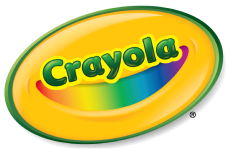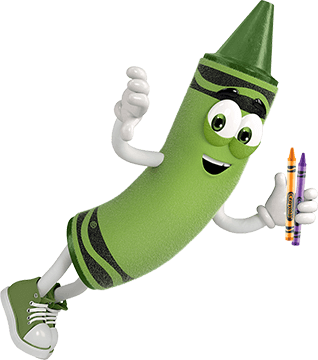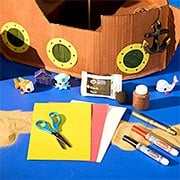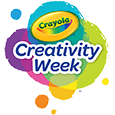Antes de que se introdujeran los® lápices de colores, producíamos crayones de marcado negros en 1900. Estos primeros lápices de colores, hechos con negro de humo seco y varias ceras, ahora se conocen como lápices de colores de marcado Staonal®, ampliamente utilizados en entornos industriales.
Reconociendo la necesidad en las escuelas de crayones de cera seguros y asequibles, Binney & Smith creó la primera caja de ocho lápices de colores Crayola en 1903. Vendida por cinco centavos, esta caja incluía rojo, naranja, amarillo, verde, azul, violeta, marrón y negro. El nombre Crayola fue acuñado por Alice Binney, esposa del fundador de la empresa, Edwin Binney, y ex maestra de escuela. Combina la palabra francesa para "tiza" ("craie") con "ola", que significa "aceitoso".
¿Quieres saber más sobre nuestra colorida historia? Echa un vistazo a los detalles en Crayola.com.
Si tienes preguntas adicionales, ¡nos encantaría saber de ti! No dudes en llamarnos o enviarnos un mensaje de texto al 1-800-CRAYOLA días laborables entre las 9 AM y las 4 PM hora del Este. Si prefieres enviarnos un correo electrónico, visita nuestra página de contacto.
Preguntas relacionadas
Explora respuestas a preguntas comunes, consejos útiles para eliminar manchas e ideas creativas para aprovechar al máximo nuestros materiales de arte y recursos gratuitos.
-
Crayola® did not invent the crayon. The "modern" crayon originated in Europe, initially made from a mixture of charcoal and oil, later replaced by powdered pigments. Wax was later substituted for oil, making the sticks sturdier and easier to handle.
In 1902, Crayola Crayons were invented by Binney & Smith and first offered for sale in 1903. The trade name "Crayola" was coined by Mrs. Edwin Binney, combining "craie" (French for chalk stick) and "oleaginous" (oily).
Crayola manufactures over 3 billion crayons each year, primarily made from paraffin wax and color pigment. Learn more about Crayola's colorful history at Crayola.com.
-
In 1993 we conducted a poll to find out the most popular colors in America. Blue was voted the most popular Crayola Crayon color. Rounding the top ten were red, violet, green, carnation pink, black, turquoise blue, blue green, periwinkle and magenta.
In 2000, we did another Crayola Color Census, and blue again reigns as number one! Six other shades of blue finished in the Top 10 including cerulean, midnight blue, aquamarine, periwinkle, denim and blizzard blue. The other colors rounding out the list included purple heart, caribbean green and cerise.In 2025, Crayola announced the results of its first Global Color Vote for National Color Day on October 22, revealing that we share a common connection to certain hues. Earlier in 2025, consumers from 183 countries (94% of the countries worldwide) cast their votes, and the top three favorite Crayola colors are Cerulean (blue), Robin’s Egg Blue and Wisteria.
-
The first part of the Crayola Crayon color name is an adjective describing the second color name on the crayon. Green-blue is really blue with a touch of green, while blue-green is really green with some blue pigment in the crayon. The same holds true for orange-red and red-orange.
-
In 1958 the box of 64 Crayola Crayons was introduced. It was the first package to include a built-in sharpener design. We continue to manufacture this package design today in the 64 and 96 count Crayola Crayon package.
-
According to Merriam-Webster, the proper pronunciation of crayon is in two syllables: krā-än. However, variations in pronunciation may occur due to individual and regional dialects. It's important to note that "crayon" is a generic term, while Crayola® is our company name and a registered trademark brand.




